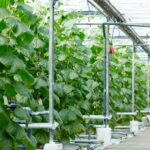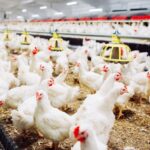Farming in the Western Cape, South Africa, comes with unique environmental challenges and responsibilities. As climate change impacts become more pronounced, reducing your farm’s carbon footprint isn’t just good for the planet—it’s essential for long-term sustainability and profitability. Here’s how farmers in the Western Cape can take effective steps to lower greenhouse gas emissions and build a more resilient agricultural business.
1. Optimize Water Use
Water scarcity is a critical issue in the Western Cape. Efficient water management reduces energy consumption associated with pumping and irrigation. Implement drip irrigation or micro-sprinklers to deliver water directly to plant roots, minimizing waste. Harvest rainwater and reuse greywater where possible. Scheduling irrigation during cooler hours also reduces evaporation losses.
2. Adopt Conservation Agriculture
Conservation agriculture techniques such as minimum tillage, cover cropping, and crop rotation improve soil health while sequestering carbon. Healthier soils retain more organic matter, reducing the need for synthetic fertilizers which contribute to nitrous oxide emissions—a potent greenhouse gas. These practices also enhance water retention, vital in the region’s semi-arid climate.
3. Use Renewable Energy Sources
Switching to solar, wind, or biogas energy reduces reliance on fossil fuels. Solar panels can power water pumps, lighting, and machinery, significantly cutting carbon emissions. In the Western Cape’s sunny climate, solar energy is particularly viable and increasingly affordable.
4. Improve Livestock Management
Livestock farming is a notable source of methane emissions. Practices such as rotational grazing improve pasture quality and soil carbon storage. Feeding animals with balanced diets reduces methane production during digestion. Manure can be collected and processed in biodigesters to capture methane for energy use rather than allowing it to escape into the atmosphere.
5. Reduce Chemical Inputs
Excessive use of synthetic fertilizers and pesticides leads to greenhouse gas emissions and soil degradation. Employ integrated pest management (IPM) and organic fertilization to maintain productivity while lowering environmental impact. Composting farm waste and using natural soil amendments enrich the soil without adding to your carbon footprint.
6. Efficient Farm Equipment Use
Machinery emissions contribute significantly to farm carbon footprints. Regular maintenance ensures engines run efficiently, reducing fuel consumption. Where possible, use fuel-efficient or electric machinery. Planning field operations to minimize passes also lowers emissions and soil compaction.
7. Plant Trees and Maintain Natural Vegetation
Trees and indigenous vegetation act as carbon sinks by absorbing CO₂. Incorporate agroforestry practices on your farm to provide shade, improve biodiversity, and protect against soil erosion. Restoring natural habitats around your farmland supports ecosystem health and long-term sustainability.
Reducing your farm’s carbon footprint in the Western Cape requires a combination of smart resource management, technology adoption, and sustainable farming practices. By taking these steps, farmers can protect the environment, reduce costs, and ensure their operations thrive in a changing climate. As the Western Cape faces increasing environmental pressures, proactive farmers will lead the way toward a greener, more resilient future.
Join 'Farmers Mag' WhatsApp Channel
Get the latest Farming news and tips delivered straight to your WhatsApp
CLICK HERE TO JOIN






